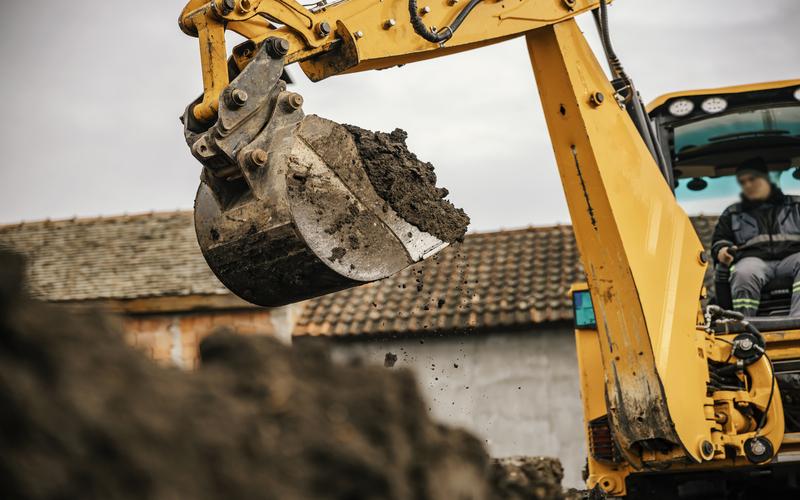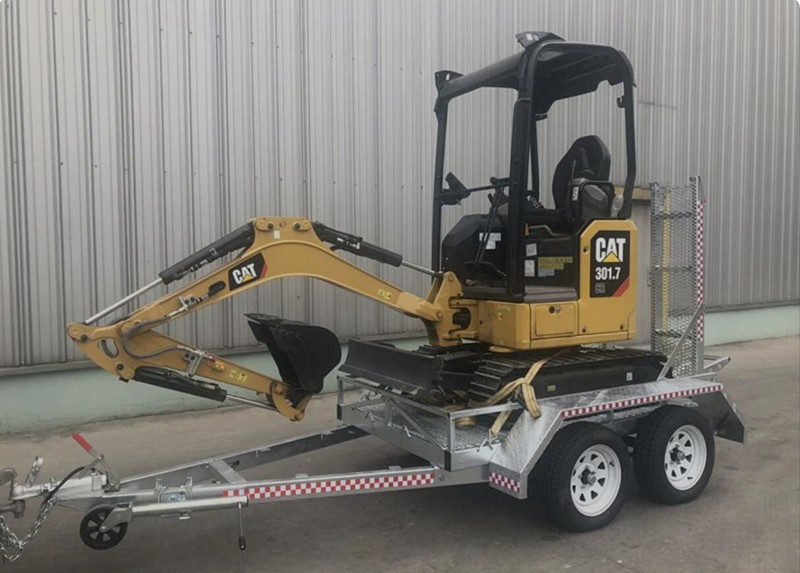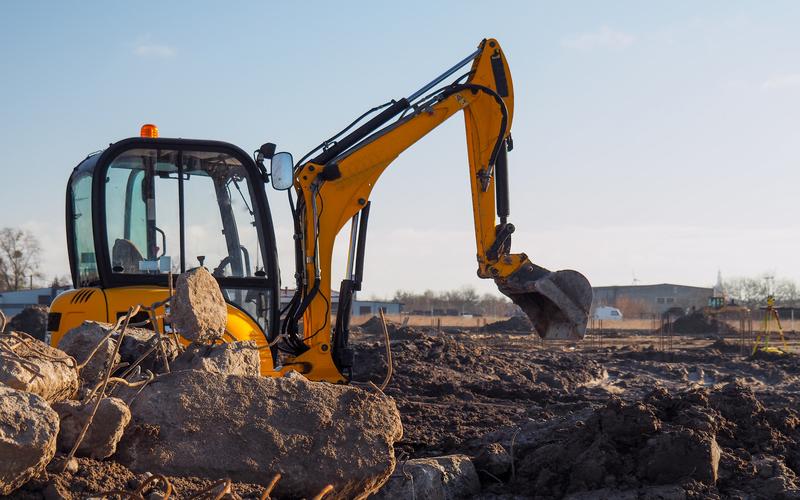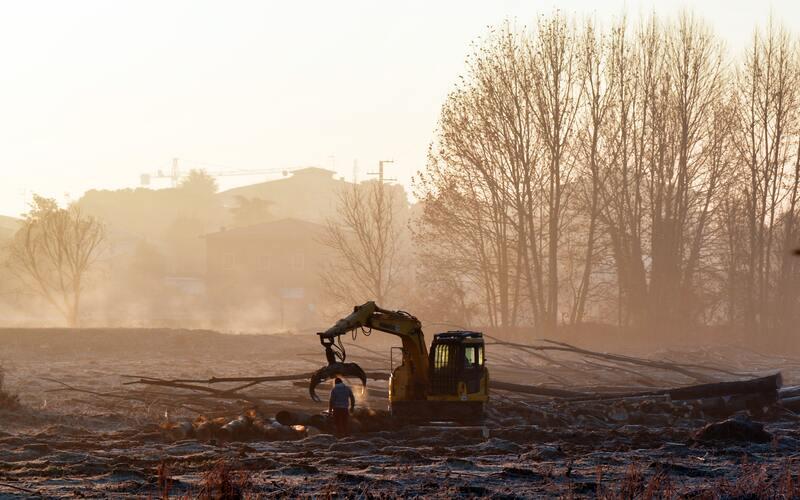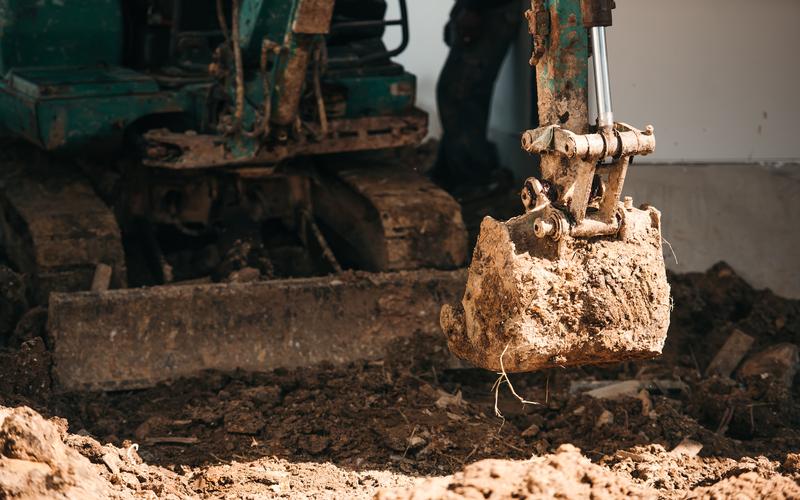A bucket is the most standard attachment when you get a mini excavator, but it can vary depending on your request to your dealer. Fortunately, a mini excavator bucket can do more than just digging.
Depending on its size and additional features, it can perform all sorts of tasks, which makes it valuable in different applications like construction, forestry, landscaping, utility, and material handling.
To better understand them, here are some of the most frequently asked questions about mini excavator buckets.
Different Types Of Mini Excavator Buckets
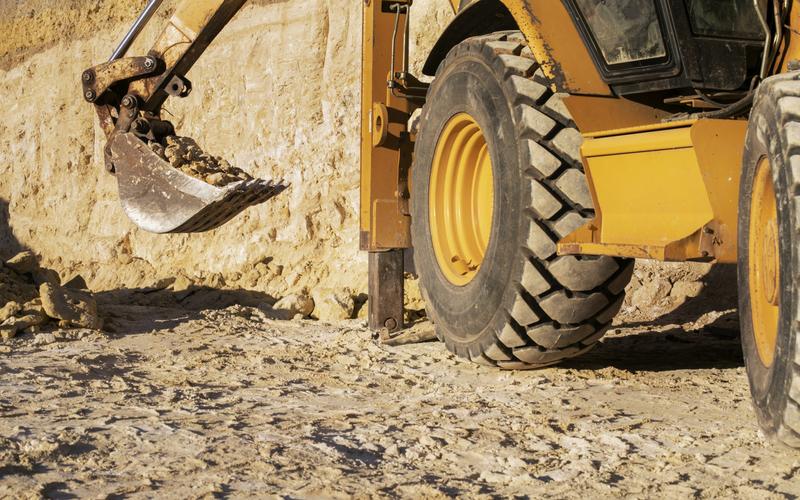
Types of mini excavator buckets
These are the different types of buckets that you can get for a mini excavator:
1. Digging Bucket
The digging bucket, often called the General Purpose Bucket, is the most recognizable mini excavator attachment. Its primary use is for digging, making it useful in construction environments, landscaping, and groundwork in general.
If you don’t specify an attachment when buying or hiring a mini excavator, this bucket is most likely the one you will get. Still, there are so many things that you can use for it, no matter what your project in mind is.
The teeth of the digging bucket make it easier to dig through hard and compact soil. It is also powerful enough to be used in demotions and breaking down large chunks of debris on a side.
They usually come in various widths, and you can choose which one best suits the job. It would be best to inquire in your local dealership or online store for the available sizes of their digging bucket before getting one.
2. Rock Bucket
Although a digging bucket is relatively durable, there might be better options for tougher digging jobs. If you need a more heavy-duty bucket, you would need a rock bucket.
Rock buckets are reinforced with thicker and stronger wear plates, making them more durable. It also has sharper teeth, which allows it to withstand harsher materials and environments. If you plan on working with highly abrasive materials, this is the bucket you should use.
3. Utility Bucket
A utility bucket is a modified standard digging bucket mainly used to protect utility workers when digging near cables and other utilities.
4. Grading Bucket
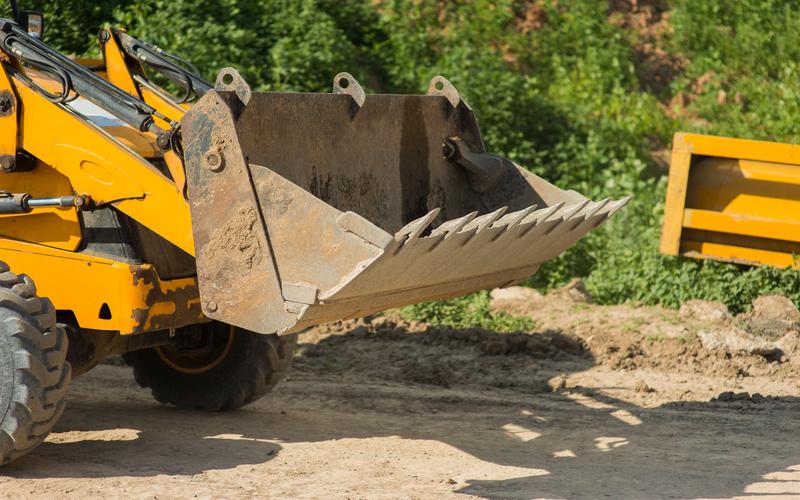
Mini excavator grading bucket
The grading bucket has a variety of names, including a finishing bucket, dyking bucket, or ditch cleaning bucket. It has a wide and shallow bucket to level the ground before starting any work.
The low-profile shell of this bucket is specifically designed to increase its width without adding too much weight. In this case, it would not overload the mini excavator.
A grading bucket is mainly used against softer materials. It can create a smooth finish to the ground, all thanks to the flat edge of the bucket. Aside from leveling and profiling, you can use this bucket attachment for sloping, backfilling, cleaning ditches, and loading material.
5. Tilt Ditching Bucket
A Tilt Ditching bucket tilts, which is evident in its name. It is the perfect solution for profiling and grading on an angle.
This bucket is specifically manufactured with a hydraulic hook, which allows it to tilt from left to right. This gives the bucket more flexibility when working with complex shapes and forms like ditches, sloped landscaping, and leveling.
6. V Bucket
A V bucket has a distinct triangular shape. It is designed to form clean sloped trenches when used for digging. You would want to use this bucket type to lay cables and pipes and create drainages.
Due to their complex design, they are primarily manufactured for larger excavators. However, you can still get one for your mini excavator.
7. Hardpan Bucket
The hardpan bucket performs similarly to a rock bucket but has ripper tooth-style features that make it easier to use. The primary purpose of these additional features is to enhance its digging ability. They make it more efficient to break up compacted grounds where a regular digging bucket won’t be able to go through.
8. Micro Trenching Bucket
A Micro Trenching Bucket is the narrowest bucket you can get for your mini excavator. You can use it to dig trenches only a few inches wide and have a digging depth of around 400 to 700 mm deep.
This bucket was specifically designed to create trenches for Fiber Optic Cables installation. However, you can still use it for different tasks, like installing pipes, cables, and irrigation.
The micro trenching bucket can reduce the time you will spend backfilling the area you dug out because it creates a precise area needed for the task.
9. Riddle Bucket
The riddle bucket also called the Skeleton Bucket, is known like that because of how it looks. The slotted feature of this bucket makes it easy to separate aggregates from loose soil. You will often see them on construction sites when the task requires removing or reusing aggregates, rocks, and debris.
Aggregates can be recycled and used for different applications, so they are often collected on sites. However, you can also use this bucket attachment to remove larger materials like bricks, pipes, tree roots, soil, and small stones.
10. Rake Riddle Bucket
This bucket combines the riddle bucket and the standard rake attachment. It is a shallow bucket with a slotted back and narrow tines along its front edges.
While using this bucket attachment, you can rake through materials on the ground. You can also riddle the bricks and separate larger chunks of rocks from loose soil.
A rake riddle bucket has the feature of two useful bucket attachments, so you won’t need to hire or purchase two separate buckets. This allows you to save money and storage space for your mini excavator attachments.
How To Choose The Right Bucket For Your Mini Excavator?
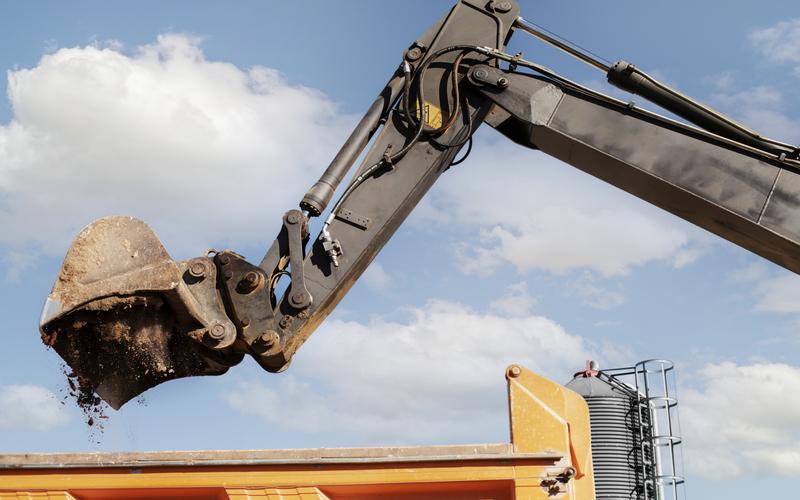
Choosing a mini excavator bucket
Before getting a mini excavator bucket, you need to slow down and think about these essential factors:
1. Materials
You need to consider the soil condition on the site or the material you plan on handling before getting a specific mini excavator attachment. If the soil in the area consists of gravel, clay, sand, or shale, you should get an abrasion-resistant and heavy-duty bucket.
More durable buckets are recommended when working with abrasive materials and digging the hard ground.
2. Size
The second factor you must consider is the size. Mini excavator attachments come in various widths and weights that can affect how you handle the machine.
Larger buckets are recommended for handling more material, while smaller buckets are best for faster cycling. You should also consider the capacity of your mini excavator. You can always talk to your dealer regarding this matter.
3. Needs
Aside from the material you plan on working with and the bucket size, you should also consider what you need. Choose a bucket that can help you get the job done more efficiently, preferably if it is made from high-quality materials and has a thicker plate built to extend its life.
4. Accessories
Generally, the mini excavator buckets are already great on their own, but you can use accessories and customization to make them more efficient. One example is the teeth, which allow most mini excavator buckets to dig through different soil types quickly.
What Are The Accessories For Mini Excavator Buckets?
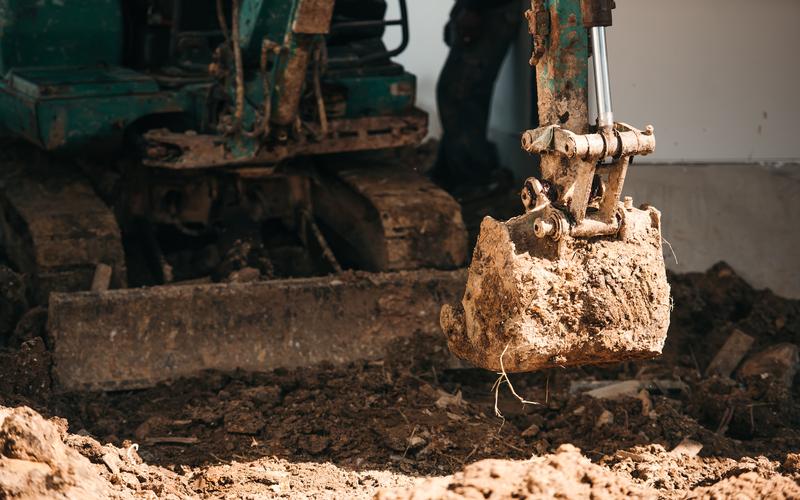
Mini excavator bucket accessories
Accessories include additional features to a regular mini excavator bucket, making it more valuable in your work. These are the add-on features that you can include when customizing your bucket:
1. Teeth
Teeth are the most common add-on for mini excavator buckets because it makes it easier to break down tough soil. It comes in various sizes and purposes, and you can choose which suits your needs best.
2. Teeth spacing
Do you know that you can adjust the teeth spacing in a mini excavator bucket? In most cases, wider-spaced teeth make it easier to penetrate a rock, while tighter teeth spacing works better in trench digging.
3. Side cutters
Most excavator buckets come with side cutters that are notably thicker on the side of the bucket. You can customize it to have additional bolt-on cutters so it would be easier to dig through roots when excavating an area.
4. Wear protection
Side cutters can also act as wear protection, in addition to the bottom and side wear plates. They can increase the lifespan of the bucket.
5. Quick coupler
Quick coupler allows easy switching between mini excavator attachments, essential in a busy work environment. It can help your mini excavator hold augers, rippers, grapples, and different buckets more securely.
6. Thumb
A thumb is a great addition when handling irregularly shaped loads. It will pinch the material in place while transporting it to another area.


